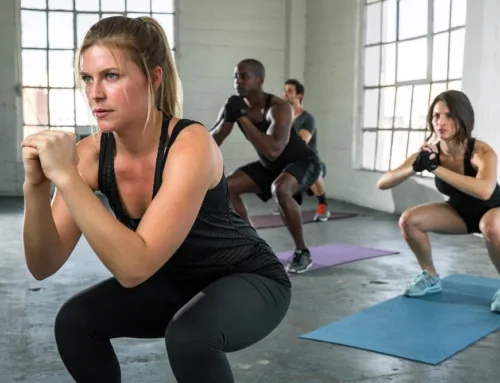Among both gym enthusiasts and those starting their fitness journey, cardio is a hot button topic—let alone different forms of cardio. But today, we’re gonna go there: we’re discussing whether running or cycling is better cardio.
Both are powerhouse activities for heart health, but which one gives you more bang for your buck? Which is more sustainable long-term? Which best compliments muscle hypertrophy?
In this article, we’ll lay out the facts and compare these two popular workouts. Whether you’re a seasoned athlete or a first-time gym-goer, we’ll help you understand the pros and cons so you can make a smart choice that fits your lifestyle and goals.
Main Points
- Cardio exercise strengthens the heart, improves lung capacity, boosts mood, and reduces chronic disease risk. Aim for a mix of moderate and high-intensity workouts regularly for maximum benefits.
- Running is a straightforward form of cardio that can be done anywhere, but it has a high impact on joints, which can cause injuries. Cycling is a lower-impact alternative that can be better for those with joint concerns or who prefer a different type of workout.
- Mix things up to keep your cardio routine engaging. Alternate between different activities, indoor and outdoor settings, and vary your intensity levels to maintain motivation and avoid workout plateaus.
Cardio Basics
Before diving into the specifics of running and cycling, let’s touch on the basics of cardiovascular exercise. Cardio, short for cardiovascular exercise, refers to any activity that increases your heart rate and respiration while using large muscle groups repetitively and rhythmically. The foundation of cardio is built upon the consistent flow of oxygenated blood by the heart to deliver oxygen to working muscles.
Cardio workouts can vary in intensity, duration, and type, including activities such as walking, swimming, dancing, and, of course, running and cycling. Engaging in regular cardio exercise is crucial for maintaining and improving heart health, increasing lung capacity, and reducing the risk of heart disease, stroke, and other health issues.
Understanding the role of cardio in a balanced fitness regimen is the first step in appreciating the benefits of any cardio-based activity, be it the simplicity of running or the joy of cycling. It’s the cornerstone of a healthy lifestyle, providing a myriad of benefits that extend beyond physical health to mental and emotional well-being.
Cardio exercise—like running and cycling—is essential for heart health, burning fat, and boosting mood. It strengthens the heart, improves circulation, and can lower the risk of chronic diseases. Regular cardio also supports brain health, joint health, and promotes healthy skin.
The American Heart Association recommends at least 150 minutes of moderate exercise weekly. Whether it’s a brisk walk, a bike ride, or a swim, get your heart pumping for better health.
Cardio’s Impact on Health
Cardio increases heart and breathing rates, leading to better oxygenation and circulation. It helps manage blood pressure, supports joint health, and reduces the risk of heart disease and diabetes.
The Calorie-Burning Advantage of Cardio
Cardio is key for weight loss, with high-intensity interval training providing a time-efficient option. Regular sessions help burn calories and fat, making every minute count towards your goals.
Running: A Love-Hate Relationship with Cardio
Running is a popular but polarizing form of cardiovascular exercise, with a love-hate relationship among fitness enthusiasts and beginners. The simplicity and accessibility of running make it a preferred choice for many looking to improve their cardiovascular health.
However, it’s not all sunshine and rainbows. Despite its benefits, running can be challenging and is sometimes associated with injuries, causing a dislike for this exercise among some individuals.
Understanding the pros and cons of running can help individuals make informed decisions about incorporating it into their cardio fitness routines. Whether you’re a seasoned marathoner or a newbie taking your first steps, knowing what to expect from running can help you prep your body and mind for the journey ahead.
Advantages of Running
Running is an efficient way to burn calories and release endorphins, which are natural painkillers produced during aerobic exercise. The convenience of running is enhanced by the flexibility of choosing various trails, whether flat and scenic for beginners or more challenging routes for experienced runners.
Alongside physical health improvements, running can:
- Elevate mood
- Improve concentration
- Contribute to an enhanced quality of life
- Improve sleep quality
When Running Might Not Be Right for You
While running offers many benefits, it’s essential to acknowledge its potential downsides. Running is a high-impact activity that can lead to joint discomfort and injuries if not performed correctly. This doesn’t mean you should steer clear of running altogether. Instead, being aware of these potential risks can help you take necessary precautions. Always ensure to warm up before a run, invest in good running shoes, and listen to your body.
Remember, fitness is not a one-size-fits-all journey. If running is not your cup of tea, there are countless other cardio exercises to explore!
Cycling: Pedaling Towards Cardio Fitness
Cycling is another great form of cardiovascular exercise. It’s a low-impact exercise that caters to all age groups, offering cardio fitness with reduced stress on the body.
While cycling outdoors can pose safety risks, primarily from traffic, it remains a widely endorsed cardio activity.
Indoor cycling presents a safer option that avoids the traffic-related hazards of outdoor cycling. But whether you’re pedaling on a stationary bike at the gym or cruising along a scenic trail, cycling injects a dose of fun into your fitness routine.
The Pros of Cycling
Cycling is recognized as a low-impact exercise, which means it provides cardiovascular benefits without the same strain on joints as running.
As a low-impact exercise, cycling is suitable for all ages and is enjoyable. It’s a wonderful way to soak in the sights and sounds of your surroundings while you pedal towards better health.
Cons of Biking
While cycling is an enjoyable and effective cardio workout, it’s crucial to be aware of its potential downsides. Cyclists face the danger of road accidents, which can be severe due to less protection compared to motor vehicles. Busy roads can be particularly hazardous for bikers due to close proximity to fast-moving traffic and frequent lack of dedicated bicycle lanes.
The initial cost to purchase a good quality bike can be a financial barrier for some individuals. Moreover, maintaining a bike can incur additional expenses, such as for repairs, replacements, and tune-ups.
Cycling Classes at Your Local Gym
If you’d like to get into cycling but have never done it before, why not try a cycling class at Carbon Performance? The challenge, the motivation from the coach, and the upbeat music all make one unforgettable experience. It may become your new favorite cardio!

The Real Test of Running vs Cycling
Now it’s time for the nitty gritty, to really decide which form of aerobic exercise is better for you. Let’s explore the efficiency of raising heart rates and burning fat, the sustainability of running and cycling for long-term health, and the impact of these activities on muscle hypertrophy.
Comparing Efficiency: Raising Heart Rate and Burning Fat
When it comes to raising heart rate and burning fat, both running and cycling are efficient, but they differ in sustainability. Generally speaking, running raises the heart rate higher than cycling because it involves more body muscles, leading to higher calorie burn per minute. However, cycling allows riders to maintain a raised heart rate for a longer period of time due to its lower impact on the body, which means staying in the fat-burning zone longer. But keep in mind that the efficiency of fat burning also depends on the intensity as well as the duration of the workout.
Sustainability: Running vs. Cycling Long-Term
Cycling tends to be more sustainable long-term for many due to its low-impact, which results in fewer injuries and allows for longer duration workouts.
However, running can also be a sustainable activity for those who are diligent with their fitness and recovery routines. Remarkably, there are numerous instances of older adults completing marathons, demonstrating that with proper care, running can be a lifelong pursuit. While running does have a higher impact on joints, adopting the correct techniques and ensuring adequate recovery can mitigate potential issues and support long-term sustainability.
Muscle Hypertrophy: Running or Cycling?
When considering muscle hypertrophy as a goal, neither running nor cycling is typically the go-to choice, as resistance training is the most effective method for increasing muscle size. However, between the two, cycling may provide a better complement to resistance training for those looking to enhance lower-body muscle hypertrophy. This is due to the ability to adjust resistance levels on a bike, which can simulate the muscle-building effects similar to weight lifting. Plus, have you seen the quads on Tour de France sprinters? Talk about hypertrophy!
Running, on the other hand, is more focused on building cardiovascular endurance and does not contribute significantly to muscle size, although sprinting can be an exception. Sprinting, as a high-intensity form of running, activates fast-twitch muscle fibers, which are responsible for generating power and speed. Incorporating sprinting into a training regimen can complement resistance training by enhancing muscle hypertrophy, particularly in the lower body, and improving overall athletic performance.
Therefore, for individuals aiming for muscle hypertrophy, incorporating cycling as a low-impact cardio option alongside a structured resistance training program could offer additional benefits. It’s worth noting that sprinting can be an exception in the context of running; as a high-intensity form of cardio, it activates fast-twitch muscle fibers, which can aid in muscle growth and strength.
The Winner
Ultimately, the debate of whether running or cycling is the superior cardio exercise boils down to personal preference and individual circumstances. Factors such as impact on joints, sustainability for long-term health, the pursuit of muscle hypertrophy, and personal preference all play a role in this decision.
Both running and cycling have their unique advantages and can be tailored to fit one’s fitness goals, health needs, and lifestyle. The key is to choose the activity that you enjoy the most and aligns with your objectives, ensuring a commitment to heart health and overall well-being.
Running & Cycling FAQs
Is Cycling or Running Better for People With Chronic Conditions?
For individuals with chronic conditions such as arthritis or joint issues, cycling may be a better option than running. Since cycling is low impact, it does not create as much stress on the joints as running can.
Does Cycling or Running Burn More Calories?
In most cases, running burns more calories than cycling.
Is Cycling or Running Better for Toning the Body Overall?
Both cycling and running can contribute to toning the body in unique ways. Cycling can tone the lower body muscles like the legs, hamstrings, and glutes. Whereas running can engage multiple muscle groups like the back, core, arms, and lower body.
How Does Cycling and Running Help with Bone Density?
Both running and cycling can help with bone density, but running may be better as it stimulates bone formation through force on the bones. This helps to make bones stronger and less prone to fractures.
Running and Cycling at Carbon Performance
If you’re ready to either try running or cycling, then come try it out at a Carbon Performance location near you. With top tier equipment like our stationary bikes and treadmills, and dedicated and enthusiastic coaches, you’ll be sure to reach your fitness goals.



